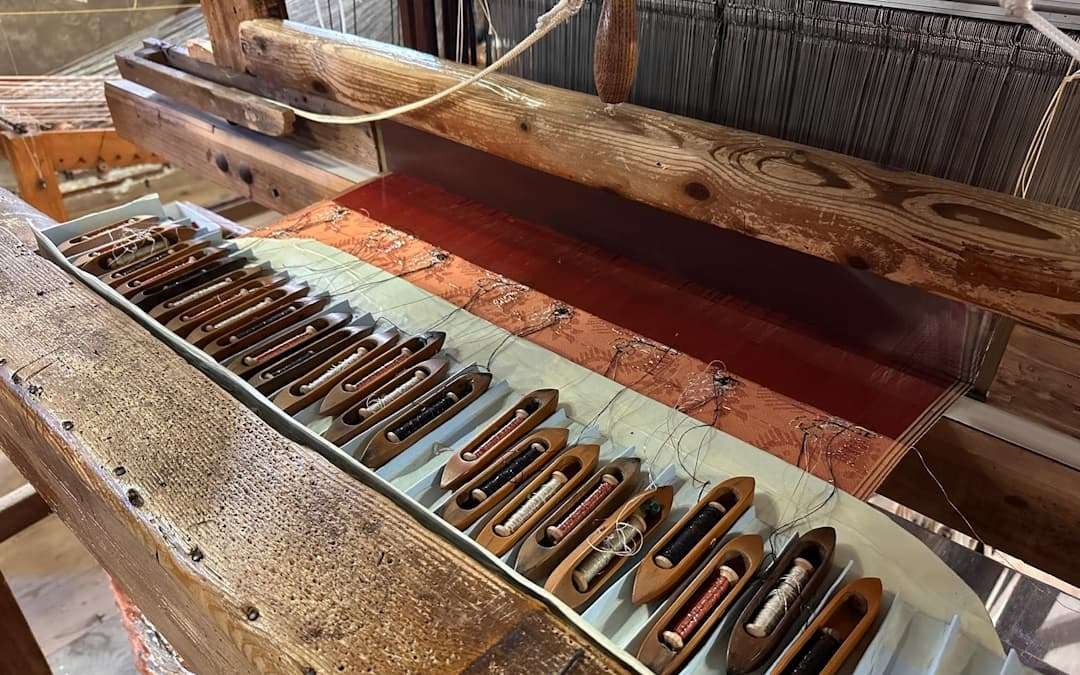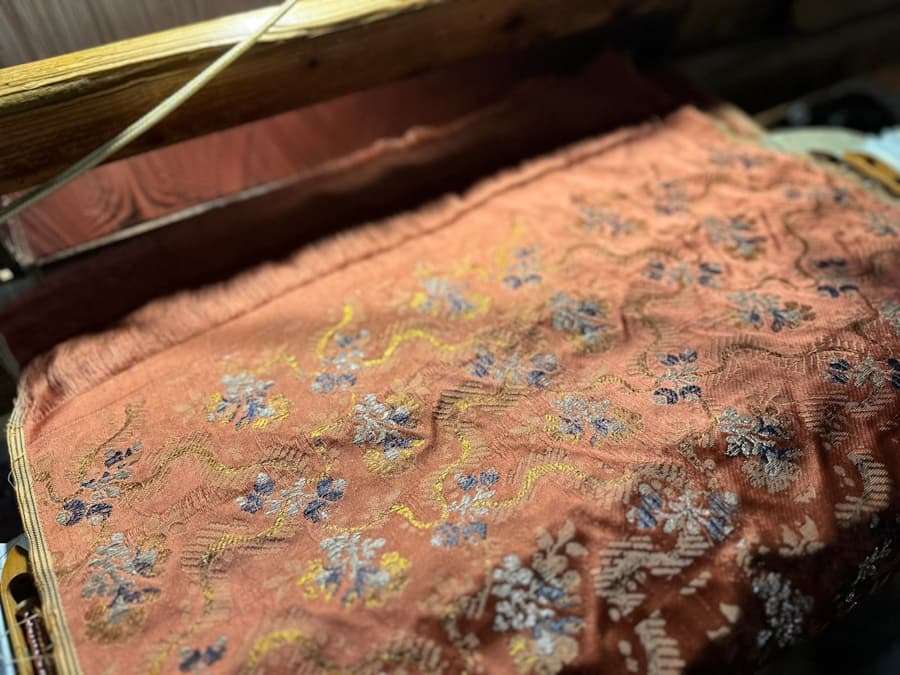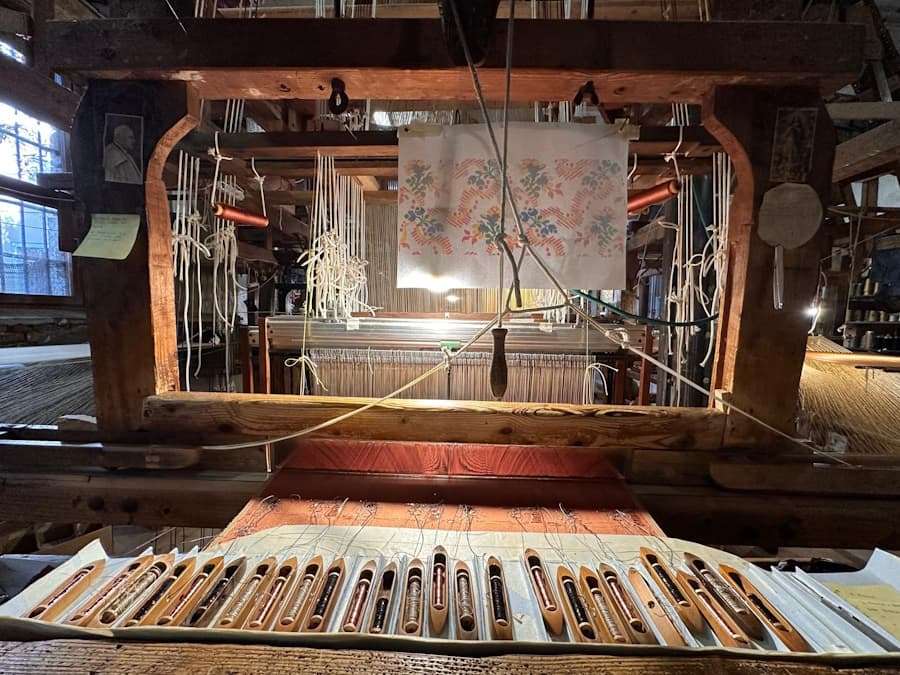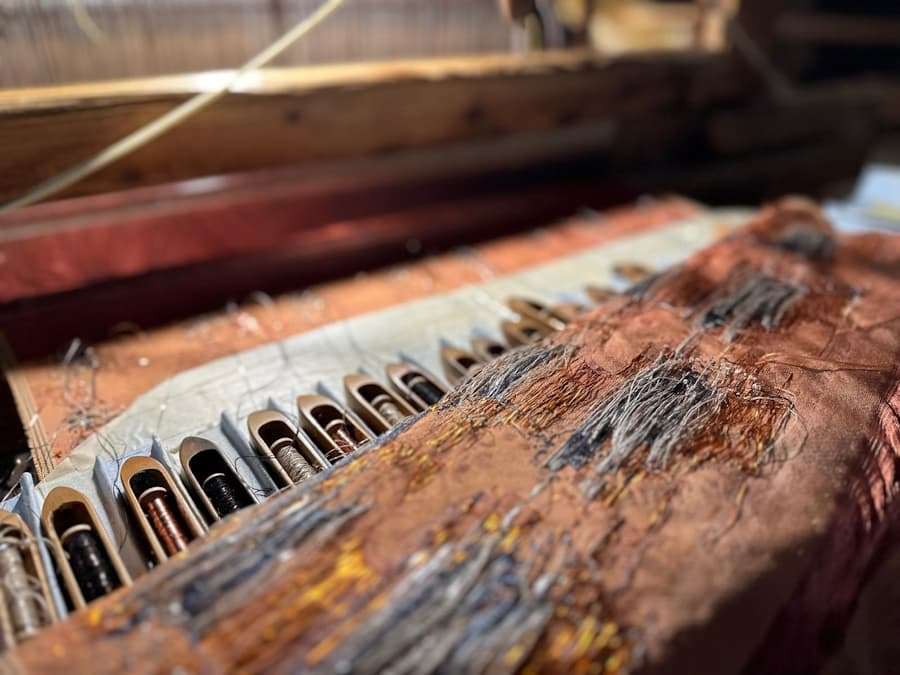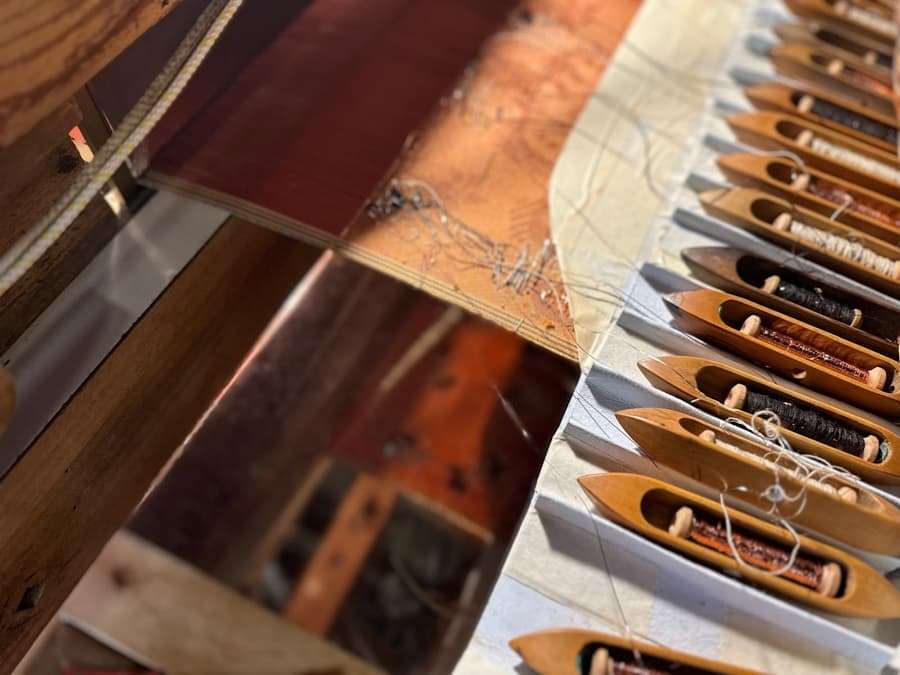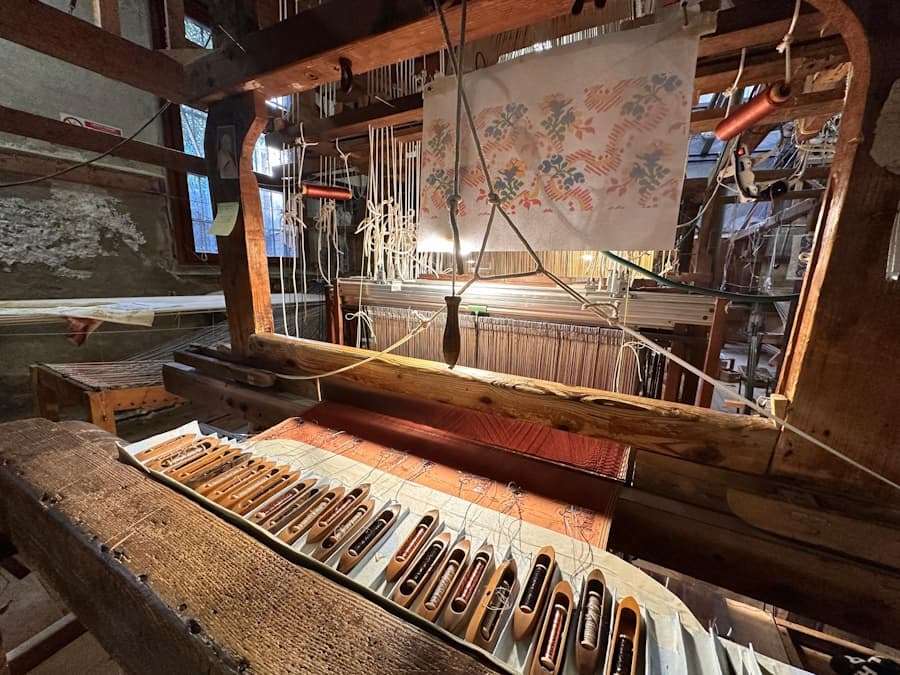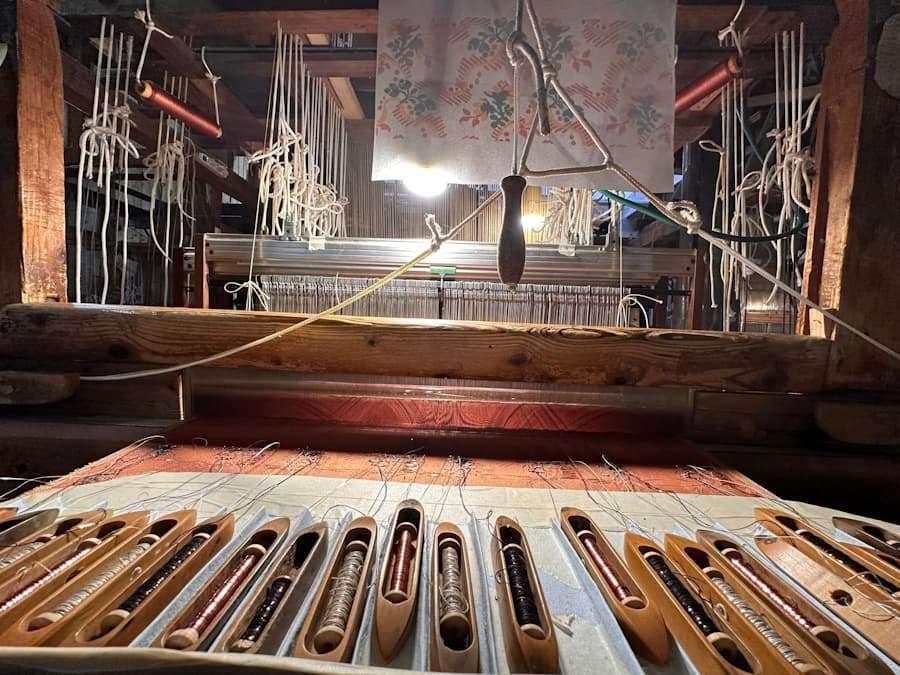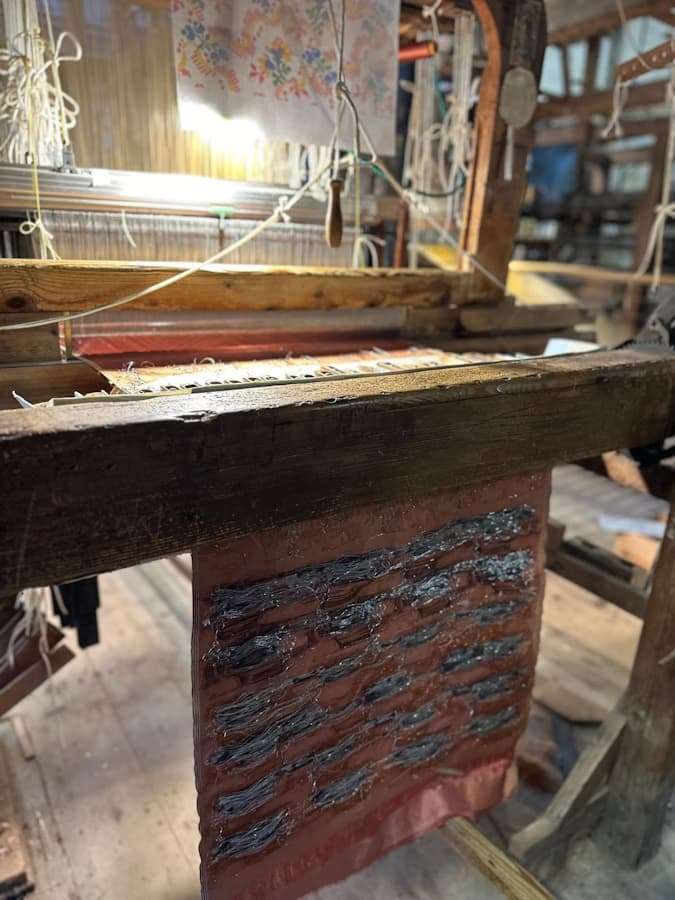There is a precious fabric, rich in history, that represents the pinnacle of the Venetian textile tradition: handmade brocade. Known for its complexity and priceless value, this extraordinary fabric had almost disappeared due to the high cost of production and the laborious techniques required. But Tessitura Bevilacqua has decided to bring it back to light, rediscovering a unique handicraft heritage and offering luxury lovers the opportunity to own a textile work of art. Carlotta, one of our weavers, reveals the secrets of this rare masterpiece that combines tradition, beauty, and technical skill.
Handmade Brocaded Fabric: History and Characteristics
Handmade brocade is a decorative fabric of rare preciousness, made using ancient weaving techniques that involve the creation of relief patterns such as flowers, geometric shapes, and abstract motifs. These decorations are obtained during the weaving process itself by inserting additional gold, silver, or silk wefts that give the fabric an incomparable brilliance and three-dimensionality. The technical complexity of these processes distinguishes handmade brocade from other figured textiles.
Brocaded fabrics have ancient origins, probably dating back to early Asian civilizations, particularly the Chinese. In the Middle Ages, these fabrics came to Europe via the Silk Road and were highly prized by the noble classes for their beauty and complexity. During the Renaissance, Venice became a major center of brocade production, and the craft techniques have remained unchanged to this day.
Brocaded Fabric Production as Told by a Weaver
We asked Carlotta, one of the weavers at Tessitura Bevilacqua, to tell us how she creates this extraordinary fabric.
Carlotta, how long have you been working as a weaver and how did you get into this profession?
I have been working at Tessitura Bevilacqua since 2000 and came to this job almost by chance. I was already familiar with Tessitura Bevilacqua and had always been fascinated by its history. When I had the opportunity to try it out, I knew immediately that this was my path. I came from the Art Institute, with a specialization in goldsmithing, and there I developed the ability to work with metals. The craft of weaving, however, I learned directly in the field, guided by the teachers who passed on their art to me. The manual dexterity honed by working with gold and copper threads has been very useful to me in the creation of soprarizzo velvets, and even more valuable for the brocades I make with metallic yarns.
How did the idea of repurposing a handmade brocaded fabric arise?
Brocade is one of Tessitura Bevilacqua’s historic fabrics. There has always been a desire to revive this production, and recently our technical director, Emanuele Bevilacqua, decided to start the project by studying a brocaded fabric. We took the original designs from our archives and set up one of the 18th-century looms with a dedicated Jacquard machine. Because it is different from the cut and soprarizzo velvets we usually make, it requires a special adjustment of the warp threads, which must be lifted individually to allow me to insert the decorative metallic yarn.
Is the loom used for brocaded fabrics the same as for handmade velvets?
Yes, the loom and the Jacquard machine placed on top of it are the same, but they work differently than in velvet production. Thanks to the perforated cards that reproduce the pattern, the Jacquard machine causes the bottom warp threads to be raised (and not the pile as with velvet), allowing me to manually insert the shuttles to create the brocaded weft. This loose weave between the warp threads creates the pattern, slightly raised.
What are the characteristics of handmade brocade?
This fabric is particularly bright because of the metallic yarns we use, and it has a rich and refined look. It is made of silk and flat metallic threads that enhance the damask pattern of the ground.
Are there any special challenges in working with a brocade compared to other fabrics?
The biggest challenge is that you are working on the reverse side of the fabric, looking at the back. This method requires a different approach: I cannot see the progress of the work directly, and I have to use a mirror and a drawing on paper as a reference. All this contributes to making the work very slow and painstaking.
In addition, great care is required to pass the shuttles with metal threads through the silk threads of the warp without breaking them, proceeding millimeter by millimeter. It is a work that reminds of embroidery in its minuteness, but here the decoration is not added later to the finished fabric: it is created at the same time as the background.
How many inches of fabric can you make in a day?
Because of the many techniques involved and the complexity of the process, you can produce about 10 cm (about 3.94 inches) of brocade per day. This, together with the materials used, makes handmade brocade a little gem, the ultimate in exclusivity for a fabric.
What decorative patterns can be made on a handmade brocaded fabric?
Handmade brocade requires patterns that are specifically designed for the Jacquard machine and that respect certain symmetries. Tessitura Bevilacqua has an extensive historical archive of designs for brocades, that can also be customized.
What are the main applications for which brocade has been designed?
Because it is a very fine fabric, it is used in high fashion to add luxurious details to a garment or to create evening bags. It can also be used in interior design, for example for cushion inserts or exclusive accessories.
What part of the brocade creation process do you find the most fascinating or satisfying?
I find the fabric preparation phase very stimulating, especially the study of colors and combinations, done under the supervision of our technical director. As well as seeing the decoration slowly take shape with each hand shuttle pass.
Handmade brocade requires so many weaving techniques and so much skill compared to other fabrics, that it can be considered a true jewel. We have decided to invest in the recovery of this ancient textile art, to preserve its knowledge and pass it on to future generations, offering a rare and precious fabric to those who love to surround themselves with exclusive pieces.
For further information, please contact bevilacqua@luigi-bevilacqua.com

